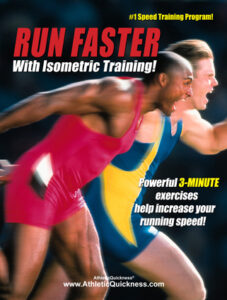What really is Muscle Confusion?
The complete answer may just surpise you!
Most people would define the term Muscle Confusion as changes in one’s workout routine every couple of weeks to prevent plateaus from occurring and to keep your muscles continually growing and responding.
Changes in your workout may be something as simple as this:
You may be working your chest with the straight bar for incline presses, decline presses and flat bench presses for about 4 weeks. You stop with those, and not only introduce 3 new chest exercises with dumbbells such as incline flies, decline flies and flat bench flies, but you may also alter your typical number of sets and reps with these new ones as well.
Whereas you might have been doing 10 reps of each with the straight bar, you might decide to use less weight but do 20 reps with the dumbbells.
Muscle confusion may also involve introducing a completely different form of exercise but still for the same part of the body. Instead of using barbells and dumbbells for chest exercises, you might introduce some cable pull exercises as well as some body weight exercises like push-ups and medicine ball throws.
You may prefer to do straight bar presses first instead of last or you may also decide to change the width of your grip on the bar from wide a grip to narrow grip for some of the reps.
You can introduce all kind of changes and call it muscle confusion.
So, most people would define muscle confusion as changes that take place in the selection of your exercises along with the sequence in which those exercises are performed. They also relate varying the number of sets and reps within a group of exercises to the muscle confusion definition, and they may also state that stopping one form of exercise and going on to something completely different also counts as muscle confusion.
Many training routines advertise this particular definition we just described and state that this concept is the key to their success.
Is muscle confusion really the key to improved athletic performance?
And, is this really the complete definition of muscle confusion?
First of all, variety with any training routine is certainly good for you. For one, it’ll keep you from getting bored and, as a result, you are likely to continue with your your training program than if it had been the same thing day after day.
But this current definition of muscle confusion has also drawn its fair share of detractors. Not everyone is convinced that it is the end-all to a great physique or improved athletic performance.
Some people believe that it is not the type of exercises that one’s body adapts to and runs into plateaus, but rather it’s the volume load or amount of weight you work out with that consistently needs to increase to prevent plateaus.
This seems logical as well and perhaps a combination of variety and extra effort is an even better strategy for athletic success. I am all for it.
But, something is still not right or complete with this definition of muscle confusion. It’s little too straight forward. I mean, if you have 30 different exercises that you know and like to do and can’t do them all in one day or even in a week, you are going to be forced to mix things up.
You are going to need to put some exercises on hold for a few weeks before you can effectively fit them back in by replacing the previous ones anyway, aren’t you? If that is the case, isn’t everyone already doing some form of muscle confusion training?
I think that muscle confusion training shouldn’t necessarily be limited to exercises that you already have some prior knowledge with and are simply mixing up the order.
Nor should it be perhaps a new exercise that you haven’t done, but is still performed in similar paths, motions and angles that other exercises put your muscle through.
Muscle confusion shouldn’t also be just about giving more effort with your exercises either. You should have been doing that all along, right?
Weaknesses in Coordination are Exposed and Challenged
Muscle confusion, or complete muscle development, should be about all the things we mentioned plus it should also be about putting your body in a situation where at first, not only is your strength being challenged, but weaknesses in your coordination are exposed and challenged as well.
A true muscle confusion training program needs to include and address the coordination of the muscle and until it does, you will find that you are simply involved doing a lot of the same things you have been doing in the past. We certainly encourage you to continue on with them, but I don’t think you’re fully involved in complete muscle development or muscle confusion training program.
Writing your name with your other hand, now that’s muscle confusion!!
Ever try spelling or writing your name with your other, less dominant hand? Of course you did. How did it look? Pretty bad, huh? Now that’s muscle confusion, wouldn’t you say?!
To me, muscle confusion is not only about implementing variety in your workouts, but is even more about discovering major weaknesses in your muscles, exposing coordination issues with them, and then hammering out a routine to get these weaknesses and uncoordinated movements removed, or improved, as quickly as possible.
Exposing weaknesses in your muscles can be pretty tricky if you constantly put them through the same basic motions and patterns that traditional exercises guide you through.
Mixing in different exercises that you are already familiar with from time to time is not a bad idea, but it’s just not a complete muscle development program either.
If you really want to be involved in a pure muscle confusion training program and thereby more fully develop your athletic capabilities you are also going to have to try completely new and different exercises that occur in all kinds of new and different planes and angles of motion, so that your existing weaknesses and lack of coordination can be first exposed and then improved upon.
When you try isometric training with the resistance band the way our programs teach, one of the first things that you will experience is a lack of balance and/or coordination with the exercises.
Many times, muscles begin to literally shake beyond your control when holding an isometric contraction in a certain position for the first few times. It’s a lot like writing with your other hand, every movement or position is a bit shaky and awkward.
This shaking and loss of balance is very normal as well as good. It’s exactly what you want to happen. It’s a sign that your muscles have yet to be fully trained and developed to the level you’ve been after. It’s a great way to complete and complement any other routine you are doing as well.
Strength, Speed and Coordination go off the Charts
After just a few weeks with this type of training, your strength, speed and coordination go off the charts.
And the best thing is, you won’t add any significant body weight to your frame with this type of training, which if it did, could potentially offset your gains.
Increasing your strength, coordination and muscle contraction speed without adding to your body weight is the key to improving your athletic performance.
It’s what you should expect when using the resistance band with an isometric training strategy the way our programs teach.
So while others may not be aware of the importance in improving your coordination, and may not even know to include it in their definition of muscle confusion, we at least know the importance of developing it within our training programs.
Personally I don’t really care how one defines muscle confusion. If you see results with a program, isn’t that what really matters?Always glad to help!
Dr. Larry Van Such






